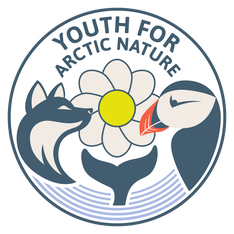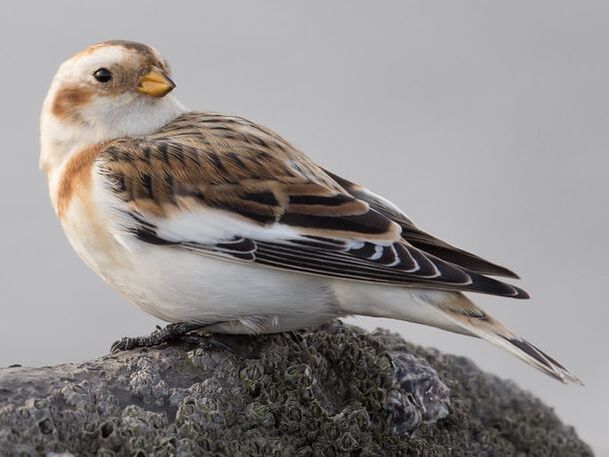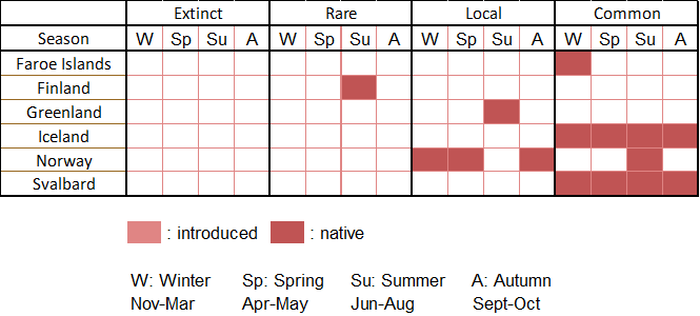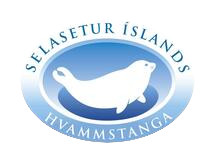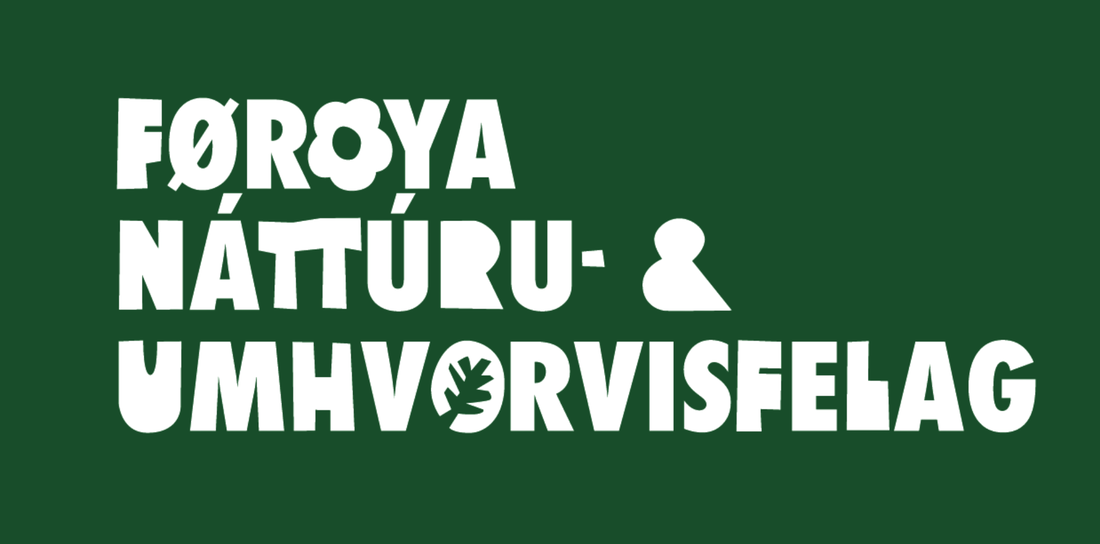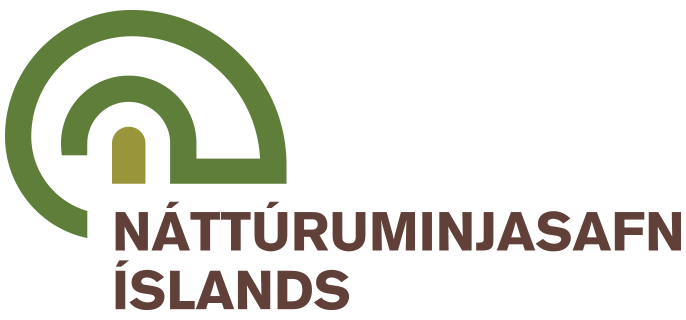|
Vulnerability: least concern (population decreasing) Invasive: no Identification: medium Monitoring: medium |
|
What is it? The snow bunting is a small passerine which has different plumage in summer and winter. In summer, males are white with black and white wings (see cover picture), and females are greyish-white with dark grey streaked wings. In winter (see picture on the right), sexes are similar with orange-brown patterns on the head and breast, brown and black streaked wings with black bars, and white under-parts. The snow bunting measures about 15cm for a wingspan ranging between 32cm and 38cm and weights ranging between 30 to 40 grams |
|
Where is it? The snow bunting is circumpolar, and is almost entirely migratory. It breeds in the Arctic regions of Canada, Alaska, northern Europe, Greenland, and Asia. It is the only common breeding passerine in Svalbard. It is a resident to coastal western Fennoscandia, and Iceland. More precisely in the East Atlantic Arctic, it is found in coastal Greenland (except for the North), all around Iceland, and in coastal Fennoscandia. The snow bunting used to breeds irregularly in the Faroes, but it is now a common winter visitor.
|
|
Interesting facts |
- It is believed that in the Faroe Islands, before the 19th century, the snow bunting was snared in abundance during the spring migration and eaten as a delicacy. The species was much more abundant in the Faroe Islands then, and was probably breeding at least in the northernmost Islands. There are reports that such snaring occurred in other Arctic areas for food, and children in Greenland might even have kept snow buntings as pets.
- The subspecies most common in Iceland, the Faroe Islands and Scotland (plectrophenax nivalis insulae) is different from the nominate subspecies (plectrophenax nivalis nivalis) found in the other North Atlantic regions. They can be differentiated by small differences in the male breeding plumage.
Pictures
- "Snow Bunting" by Mick Thompson1 is licensed under CC BY-NC 2.0
- "Sneeuwgors / Plectrophenax nivalis / Snow Bunting" by Dirk-Jan van Roest is licensed under CC BY 2.0
References
- BirdLife International (2022) Species factsheet: Plectrophenax nivalis. Downloaded from http://www.birdlife.org on 28/01/2022
- Hammer, S., Madsen, J. J., Jensen, J.-K., Pedersen, K. T., Bloch, D., & Thorup, K. (2014). Snow bunting. In The Faroese Bird Migration Atlas. Fróðskapur - Faroe University Press. http://www.birdmigrationatlas.dk/uk/species/snow-bunting
- Snow bunting. Birding Svalbard. (2021). Norwegian Ornithological Society. http://www.svalbardbirds.com/snow-bunting.html
- Svanberg, I. (2001). The snow bunting (Plectrophenax nivalis) as food in the northern circumpolar region. Annales Societatis Scientiarum Faeroensis, 48, 29–40. https://www.researchgate.net/publication/288192499
